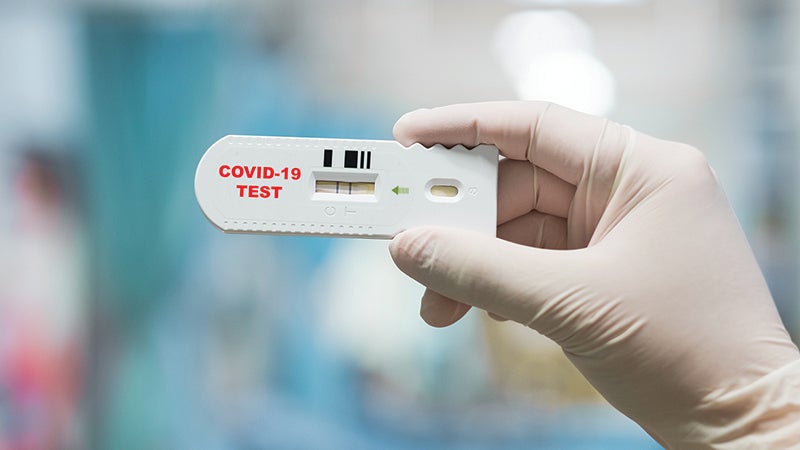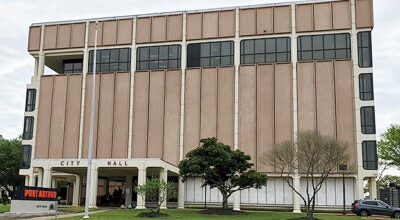Jefferson County not facing COVID business occupancy rollback just yet
Published 2:24 pm Wednesday, December 2, 2020

- COVID-19 testing
|
Getting your Trinity Audio player ready...
|
Despite single-day records set Tuesday in the number of confirmed coronavirus cases, businesses in Jefferson and surrounding counties are not yet facing a rollback under an executive order from Gov. Greg Abbott.
COVID-19 patients in Trauma Service Area R, which covers East Texas and the Gulf Coast, accounted for more than 15 percent of hospitalizations Monday and Tuesday, according to information from the Southeast Texas Regional Emergency Operations Center. If a Trauma Service Area remains at that rate for seven consecutive days, businesses in the area eligible to maintain up to 75 percent of maximum occupancy must reduce that to 50 percent.
That mandate is listed in Abbott’s GA-32, which took effect Oct. 14.
In its news release Wednesday, the EOC defined the formula for the hospitalization percentage as lab-confirmed COVID-19 patients currently in the hospital divided by total hospital capacity.
“For the past two days, it has been reported that we have exceeded the 15 percent hospital capacity threshold,” the EOC wrote. “On a conference call with DSHS [Texas Department of State Health Services] Commissioner John Hellerstedt, we were given statistical data which puts our Trauma Service Area lower than the threshold according to information that has not been available locally. Based on this data, received this morning, the governor’s executive order to reduce building capacity will not be implemented at this time. Keep in mind that determinations are not based on individual counties, it is based on trauma service areas. We will receive written notification from the state when we have exceeded 15 percent for 7 days.”
Trauma Service Area R includes Jefferson, Jasper, Newton, Hardin, Orange, Liberty, Chambers, Galveston and Brazoria counties.
Warning from EOC
According to information from Jefferson County Judge Jeff Branick, the county alone would have faced a fifth consecutive day of a COVID-19 hospitalization rate higher than 15 percent on Tuesday (21 percent).
The percentage of intensive care unit beds in the county utilized by COVID-19 patients dropped down from 48 percent Monday to 47 percent Tuesday. It stood at 22 percent on Nov. 17.
“TSA-R does not currently meet the 7-day requirement but we foresee the possibility in the future based on current trends,” the EOC stated. “If measures are put in place to decrease capacity, levels must be below 15 percent for 7 days to increase capacity.”
EOC officials remind the public preventative measures such as masks, social distancing and hand washing are effective and that “COVID is real.”
“It is imperative that our residents continue to wear masks — they serve as a ‘vaccine on your face,’” the EOC wrote. “80 percent of spread can be traced to folks with little or no symptoms.”
Single-day records
Not yet having to roll back business is somewhat good news for Jefferson County amid disturbing COVID-19 statistics released through County Judge Jeff Branick’s office, as well as updates on quarantining recommendations from the Centers for Disease Control and Prevention (CDC).
The total number of cases for Jefferson County since the pandemic began in March surpassed 9,000. Jefferson County (219 new cases) and the Port Arthur Health Department service area (120) set single-day records on Tuesday for reported positive cases.
The PAHD area’s previous record was 111 on Nov. 17, but it had not exceeded 70 since that time. Jefferson County had not surpassed 200 cases since July.
“I wish that I could explain that,” Port Arthur Health Department Director Judith Smith said. “Nederland had 52 cases. How do I explain that? I really don’t know. I don’t know if people have relaxed the guidelines.”
Port Arthur accounted for 34 cases Tuesday, Port Neches 22 and Groves 12 on Tuesday.
Smith said the majority of cases confirmed that day do not reflect activity from Thanksgiving gatherings, given that tests were done Nov. 27-29, the three days after the holiday.
“People are not going to be positive that soon after a gathering,” Smith said, adding some tests confirmed were taken as early as Nov. 24.
Asked what could have caused the single-day spike, Smith said: “I don’t have anything to pinpoint it on. I can’t pinpoint it on an event. There’s been no massive Christmas parade or super-spreader event. I don’t have that to pinpoint on. Some of these reporting are families, and that’s to be expected. We’ve seen households where there are just one person tested and no one else.”
The CDC announced Wednesday, according to multiple reports, while it still recommends a 14-day quarantine as the best way to reduce the risk of spreading coronavirus, a quarantine can end after 10 days if the infected person has not shown any symptoms and seven days if the person tests negative for the virus as well.
For more information, log onto Dshs.texas.gov/ga3031/






